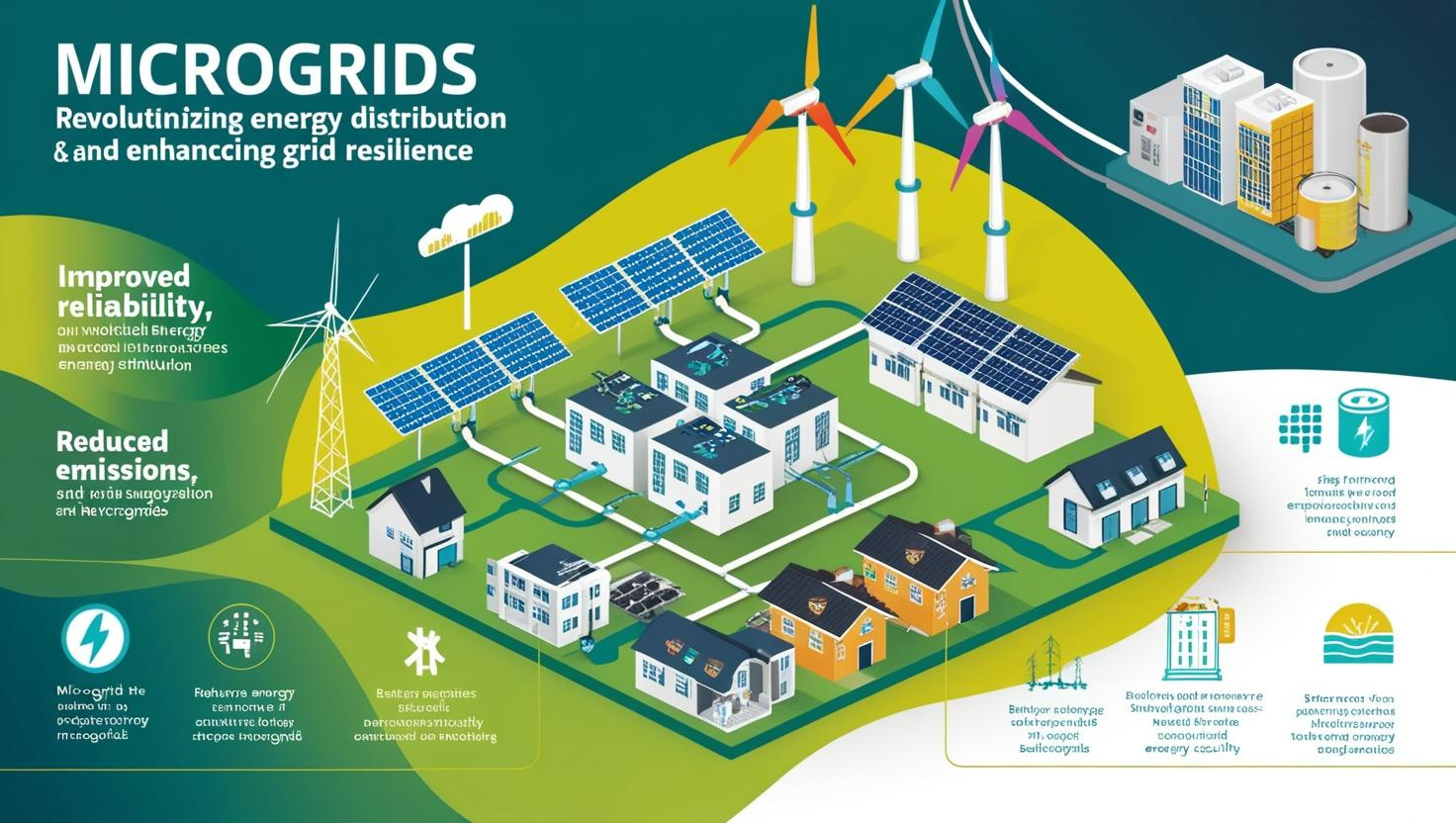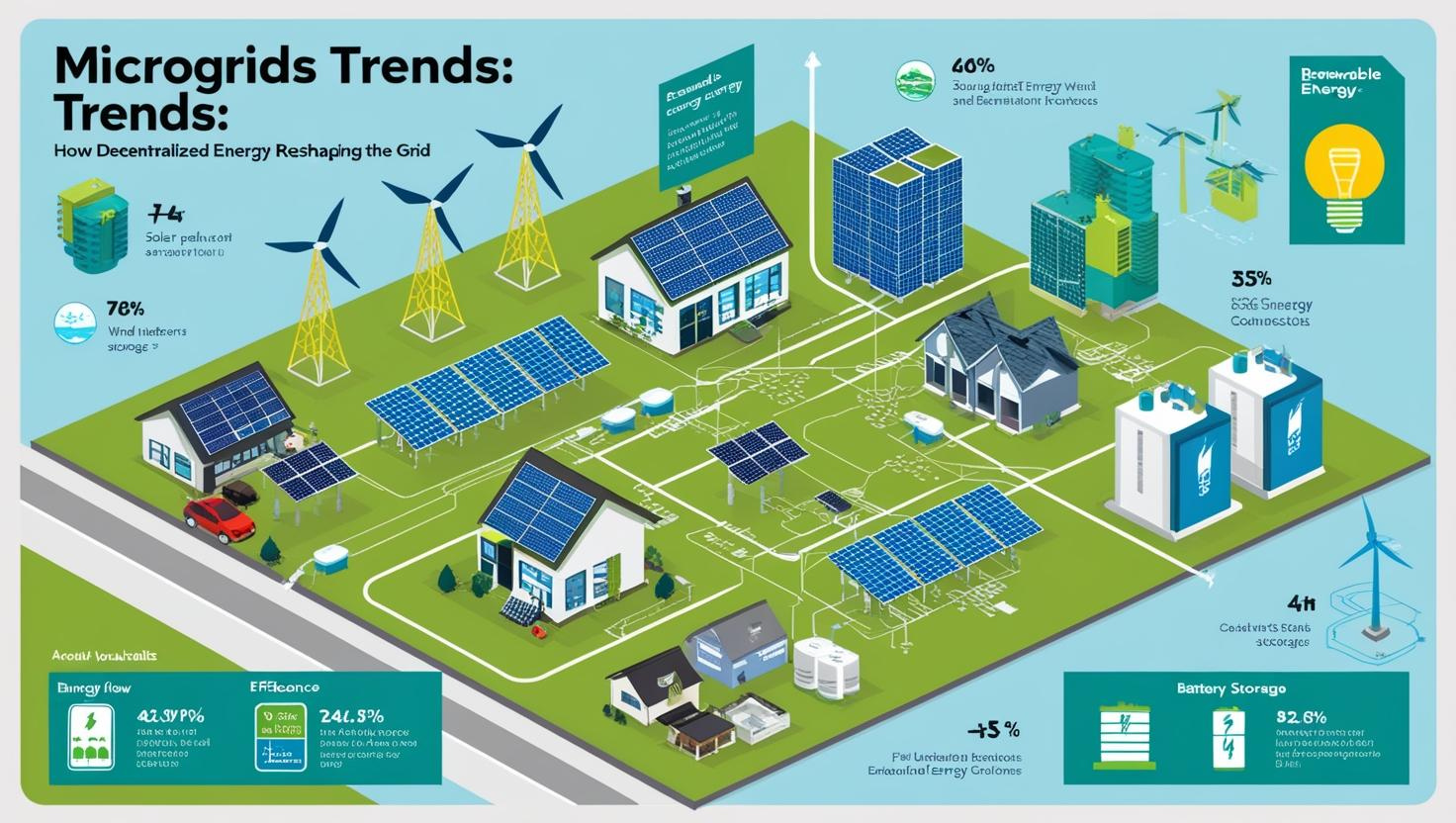Microgrids Market Trends: How Decentralized Energy is Reshaping the Grid
Microgrids are emerging as a transformative force in the energy sector, providing a decentralized and resilient approach to power generation and distribution. As traditional power grids face increasing challenges, including aging infrastructure, rising energy demand, and the need for sustainability, microgrids offer a viable solution to enhance energy security and efficiency. The market for microgrids is witnessing rapid growth as governments, businesses, and communities recognize their potential to create a more reliable and adaptive energy ecosystem.
Understanding Microgrids and Their Importance
Microgrids are self-sufficient energy systems that can operate independently or in conjunction with the main grid. They integrate various energy sources, including renewable energy, conventional generators, and energy storage, to provide a localized and efficient power supply. Unlike centralized grids, microgrids offer flexibility, enabling them to continue functioning even during grid failures or emergencies. This capability makes them particularly valuable in regions prone to natural disasters and power outages, ensuring continuous energy availability for critical operations.
Download PDF Brochure for Info @ https://www.marketsandmarkets.com/pdfdownloadNew.asp?id=917

Market Growth and Key Drivers
The microgrids market is experiencing significant expansion, driven by several factors. The increasing frequency of extreme weather events and grid disruptions has highlighted the need for resilient energy solutions. Governments and regulatory bodies are promoting investments in microgrid infrastructure to enhance energy security and support sustainability goals. The rapid advancement of renewable energy technologies and declining costs of solar panels, wind turbines, and energy storage systems have further accelerated the adoption of microgrids. Additionally, industries and commercial enterprises are investing in microgrid solutions to reduce dependency on traditional utilities and ensure uninterrupted operations.
Applications Across Industries
Microgrids are being widely adopted across various sectors, including industrial, commercial, healthcare, military, and residential applications. In industrial settings, microgrids help maintain consistent energy supply, preventing production disruptions. Commercial buildings benefit from lower energy costs and improved efficiency through smart microgrid solutions. Hospitals and healthcare facilities rely on microgrids to ensure uninterrupted power for critical medical equipment and emergency operations. Military bases implement microgrid systems to enhance energy security and reduce reliance on vulnerable centralized power sources. Remote communities and islands also leverage microgrids to achieve energy independence and reduce dependence on expensive fossil fuel imports.
Technological Advancements and Innovations
The microgrid market is witnessing continuous technological advancements, making these systems more efficient and cost-effective. The integration of artificial intelligence and machine learning enables real-time energy management, optimizing power generation and consumption. Smart grid technologies enhance the automation and monitoring of microgrid operations, improving reliability and performance. The development of advanced battery storage solutions has addressed intermittency issues associated with renewable energy sources, allowing microgrids to provide stable and consistent power supply. Additionally, blockchain technology is being explored for peer-to-peer energy trading within microgrid networks, fostering decentralized energy distribution models.

Challenges and Market Constraints
Despite their advantages, microgrids face challenges that need to be addressed for widespread adoption. High initial investment costs and complex regulatory frameworks pose barriers to deployment. Integrating diverse energy sources into a cohesive and efficient microgrid system requires advanced technical expertise. Additionally, interoperability and standardization issues hinder seamless integration with existing grid infrastructure. However, ongoing research and policy support are helping to mitigate these challenges, paving the way for broader market penetration.
The Future of the Microgrids Market
The future of the microgrid market looks promising, with increasing investments in research and development aimed at making these systems more accessible and efficient. The growing emphasis on decentralized energy generation, combined with the global push toward net-zero emissions, will continue to drive demand for microgrids. Governments and private sector players are collaborating to create favorable policies and financial incentives to encourage microgrid adoption. As digitalization and automation technologies further enhance microgrid capabilities, their role in shaping the future of energy distribution will become even more prominent.
Microgrids represent a crucial step toward building a resilient, sustainable, and efficient energy future. As the demand for reliable and clean energy solutions continues to rise, the microgrid market will play a pivotal role in transforming energy distribution. With advancements in technology, supportive regulatory policies, and increasing awareness of energy resilience, microgrids are set to become a cornerstone of modern energy infrastructure, providing stability, efficiency, and sustainability for generations to come.
80% of the Forbes Global 2000 B2B companies rely on MarketsandMarkets to identify growth opportunities in emerging technologies and use cases that will have a positive revenue impact.
- Leading Automated Guided Vehicle Companies 2024: An In-depth Analysis
- CHARGED UP: SHIFT TO E-MOBILITY AND THE EVOLUTION OF TRANSPORTATION
- Global Automotive Market: Predictions For 2024
- Revolutionizing Depot Charging: Hockey Stick Growth on the Cards
- The Future of Silicon Battery Industry: Innovations and Market Outlook


